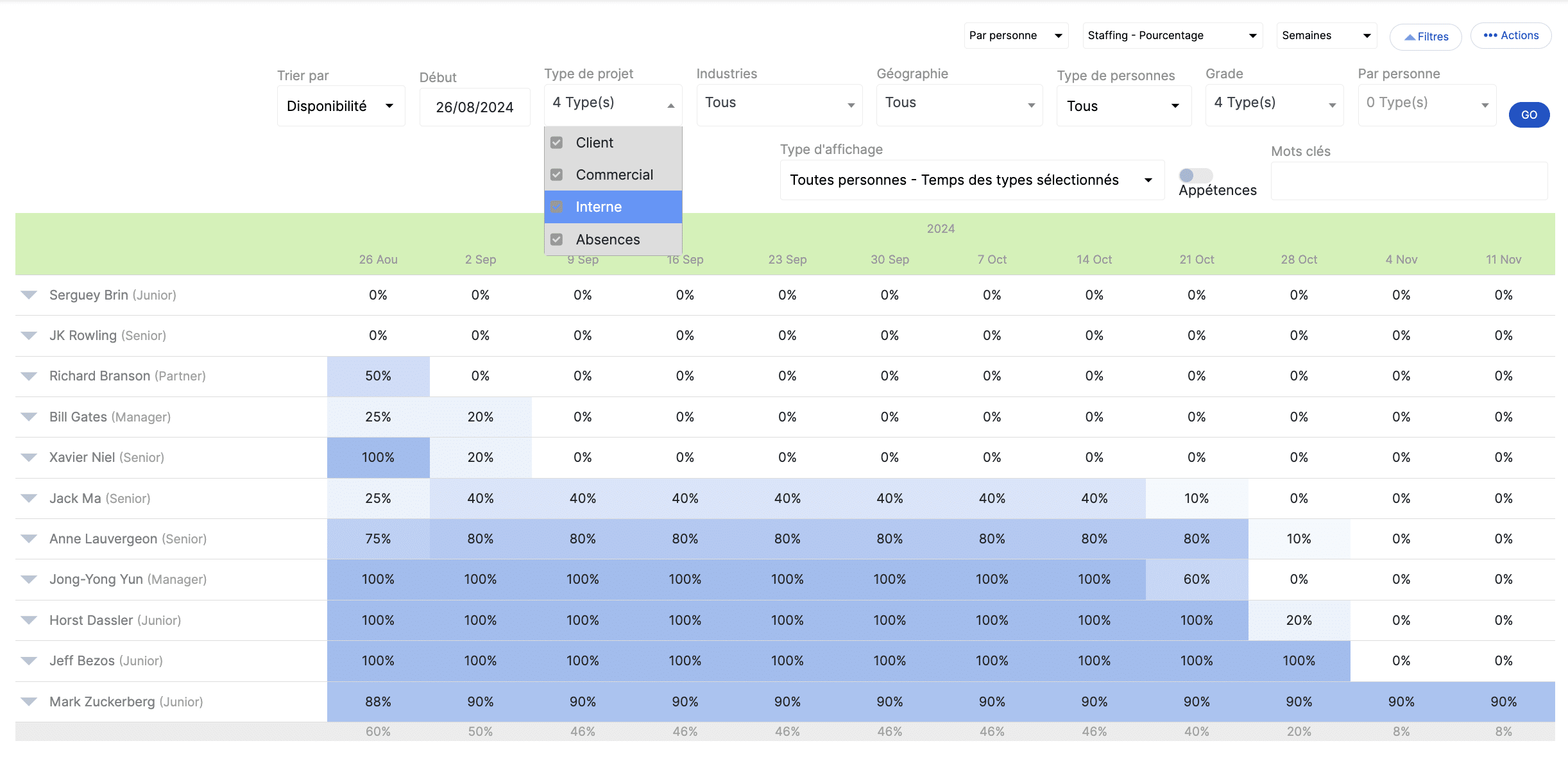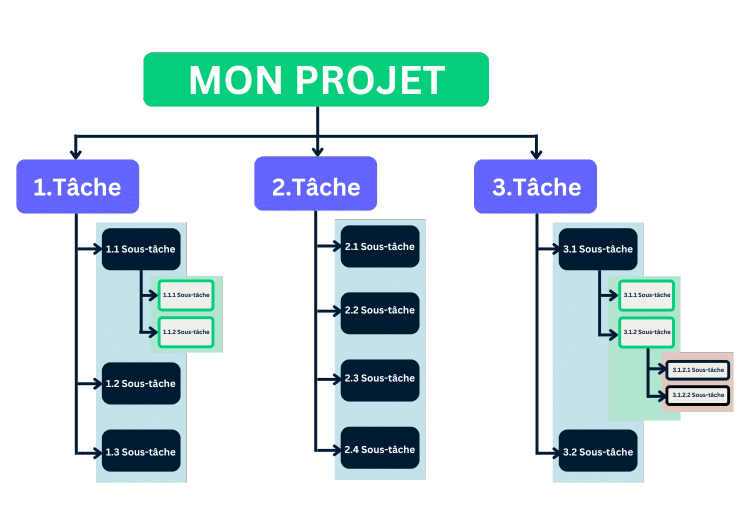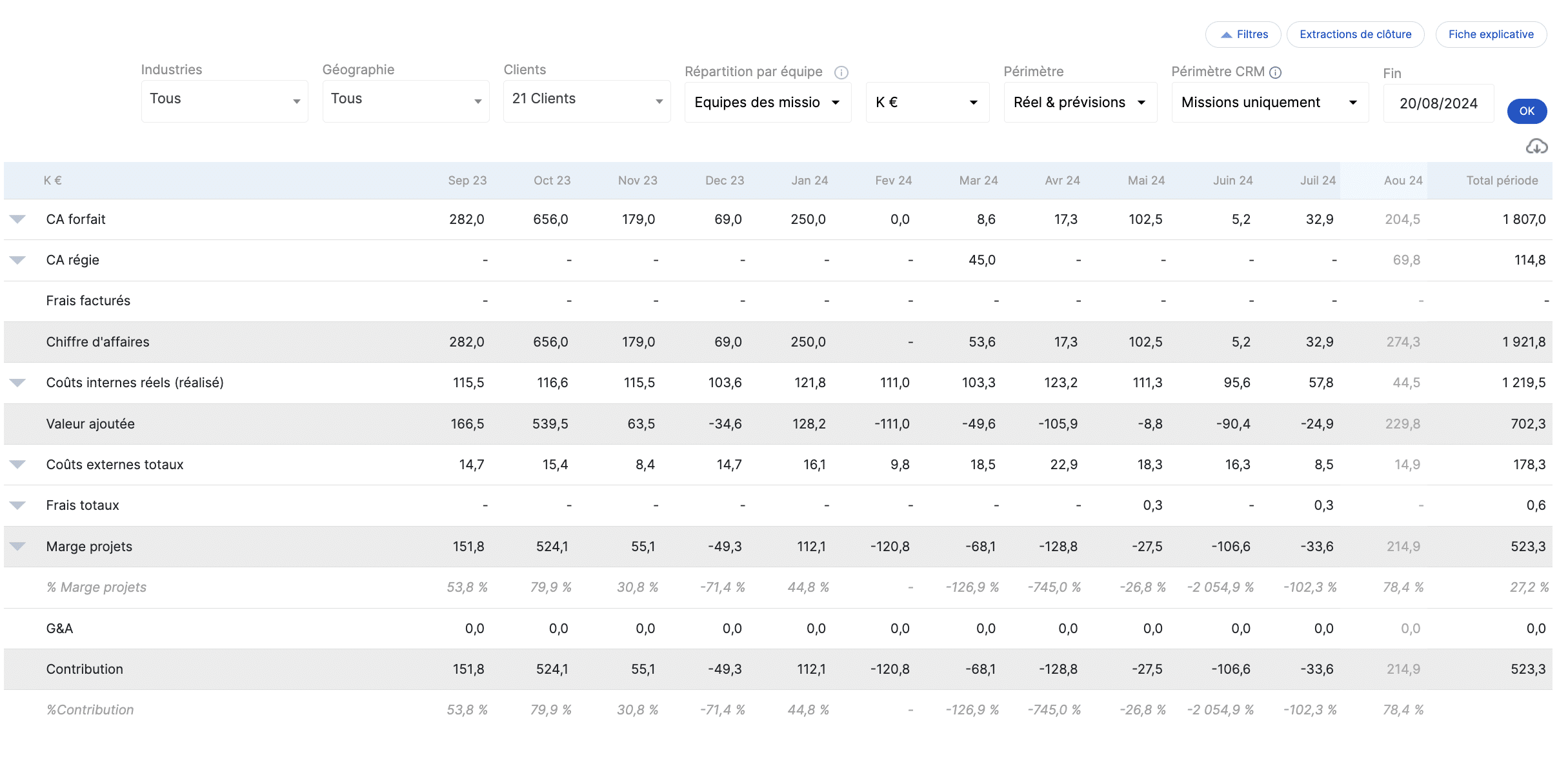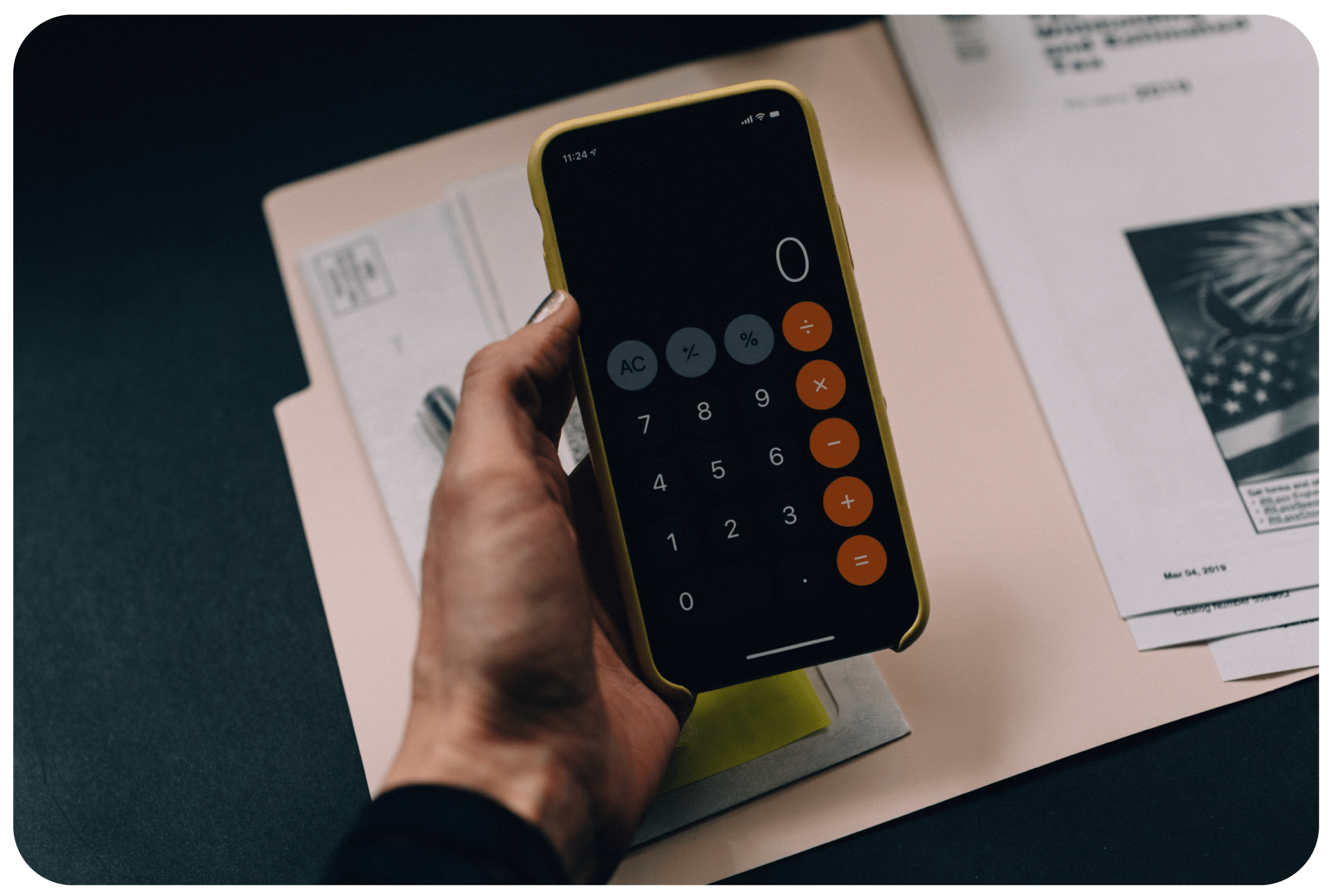Steps to Effective Project Cost Management

Often, the success of a project depends on three factors: meeting deadlines, delivering quality, and budget.
To achieve this success, project management must involve controlled and effective cost management.
This is particularly strategic for service companies whose pricing varies depending on the billing method. A certain rigour in cost management is therefore necessary.
In this article, we offer you a strategy to deploy and precise tools for optimized cost management.
What is cost management?
Definition
Cost management is a process of evaluating, budgeting, and controlling the costs of a project.
Implementing effective management is essential because it allows you to establish the budget to be respected for the success of the project.
Cost management must be planned from the outset start and monitored at everystage of its development.
Issues
Cost management requires understanding the environment in which the project operates. Indeed, this will make it possible to establish a realistic budget.
In addition, it involves careful monitoring to ensure that the project is moving in the defined direction.
Why set up cost management on a project?
Anticipating risks
Controlled cost management helps to prevent cost escalation and budget overruns. So it's important to take a preventive approach and anticipate risks before they occur.
Corrective action could be more complex to implement, and less effective.
Fueling decision-making
Cost management requires clear visibility of the project's finances : status of expenditure, remaining funds, forecasts...
All this information will facilitate decision-making thanks to better visibility and transparency.
Maximize profitability
Managing project costs also allows you to look at what is working and what could be improved. Thus, implementing cost management also means optimizing costs to maximize profitability.
To do this, it is possible to play on several factors. The amendment of the resource planning and the optimization of resources, but also negotiation with the customer are relevant avenues for improving cost and profitability management.
Facilitate the planning of other projects within the company
The more history you collect, the easier it is to plan a project. By mastering cost management on one project, you set the stage for the next ones.
Indeed, it allows you to improve your knowledge of your teams, their work capacities or the effectiveness of your communication tools and methods.
This saves you time and precision in preparing other projects with similar contexts within the company.
Step 1: Plan resource capacity
The first step to implementing effective cost management is to plan resource capacity, i.e., identify the resources needed for the project.
Resources are all tools, financial means, equipment and employees.

A strategic step
As with any project, determining the essential human and material needs remains a crucial step.
Human resources are costly and need to be anticipated. So it's vital to take them into account when estimating project costs.
Establish a resource planning plan
In this document, estimate the objectives to be achieved, and how to achieve them:
- Define your resource needs
- Estimate the cost of each
- Identify your needs over specific periods of time
Use a dedicated tool
To carry out this planning work, a dedicated tool will prove to be your ally.
Stafiz is an all-in-one solution that includes resource scheduling functionality.
This can help you better estimate your needs and check your resource capacities. You can then anticipate your recruitment plan and can better distribute your resources between your current and future projects.
Cost Management Step 2: Estimate Project Costs
Structure a cost management plan
Preparing a Cost Management Plan allows you to establish:
- The type of project expenses: direct, indirect, fixed, variable, production costs, material costs, labor, etc.
- The expenses corresponding to each resource
- Stakeholders within the project, who may have an impact on costs
- The tools used to manage costs
The budget is often different from the one planned for the preparation of the project. Anticipate unexpected costs: keep a margin of 5 to 10%.
Combine multiple project cost forecasting methods
Estimating the costs of a project is not an exact science. That said, you can gather a certain amount of information and combine forecasting techniques to try to arrive at the most accurate one.
-
The matrix method
This method consists of identifying the different tasks of the project and determining costs per task. By adding up all the costs associated with each task, you get the overall cost.
-
Bottom-up estimation
This method consists of obtaining information from the teams, in the field, whose role is operational. Their experience will allow them to give you a more accurate view of the time and costs associated with each task.
-
Top-down estimation
Top-down estimation focuses on management's vision. This then defines a budget, based on the history available, a benchmark of similar projects and alignment with strategic objectives.
-
Use estimating tools
Using real-time expense tracking software like Stafiz will also help you make your estimates. Indeed, it offers various features designed for project and portfolio management. For example, one of the features will allow you to analyze actual rather than anticipated sales rates in order to make your forecasts as realistic as possible.
Use references
Accessing the history of past projects is an effective way to estimate your project budgets. However, this means having reliable activity history available. Tools like Stafiz make this possible.
You can then seek to understand what worked and what could be optimized. You can use analogy estimation to compare projects of the same size by being realistic in your projections.
Breaking down the project with the Work Breakdown Structure technique

The Work Breakdown Structure consists of dividing and prioritizing a project into tasks and subtasks. Once you have defined them, you assign a collaborator to each of them.
By multiplying the hourly rate of each worker assigned to a task by the total estimated time, you can get an estimate of the salary cost of the whole.
In addition, there will be fixed costs such as the costs of premises, maintenance, service providers.
The Work Breakdown Structure is an effective method for estimating the budget of a project. However, it requires a clear and defined project timeline as well as a precise list of expected deliverables.
It should be noted that this solution is difficult to reconcile with an agile method, based on iteration and which is bound to evolve.
Step 3 of cost management: control costs
-
The importance of cost control
Cost tracking is a crucial step in good cost management. You must track and analyze expenses in order to avoid or at least limit any overruns.
However, there are regularly discrepancies between the forecast and the actual without this being a cause for concern. In this case, cost control should include an understanding of variances between current and originally planned costs.
To rectify the situation, you need to look for the cause of these discrepancies to get to the root of the problem.

-
Use a tool to control costs
As with the previous steps, project cost management software will help you control costs. For example, the dashboard highlights the different key indicators, allowing you to compare them and monitor their progress.
Real-time monitoring
Stafiz offers many features to track costs, including real-time expense tracking. By regularly monitoring the discrepancies between the planned and the objective, you will be able to adjust the budget as accurately as possible and optimize your cost planning.
The progress curve makes it possible to identify cost overruns at an eye's eye:

The next step is to understand the reasons for the deviations. Stafiz allows a detail by tasks, teams, geography, person as well as a view by tasks and phases that facilitate the interpretation of the results.
Tracking costs on landing
Landing cost monitoring is one of the features offered by Stafiz, which consists of collecting past and expected costs in real time to offer an automatic recalculation.
With each change in the data, the KPIs are recalculated in order to propose a version that allows the objectives to be achieved. In addition, you can be alerted in the event of risks of deviations before they even occur.
-
Track costs based on the type of projects
Cost management also depends on the pricing in place. This characteristic must be taken into account already in the cost management plan.
We identify two types of pricing.
Fixed-price project
Generally sold as a block, this type of project involves a fixed pricefor a precise expected result.
The risk is that the production carried out will be higher than the amount sold. This type of project therefore requires meticulous preparation and strong anticipation skills.
Project under management
This type of project takes into account production invoicing. The risk here is to deal with a lot of customer relations and to have to offer unbilled working days in order to maintain relationships.
-
Rectifying the trajectory of the project
Cost control alone is not enough: it must be accompanied by adjustment.
Thus, the budget and costs must evolve with the progress of the project. If its scope changes, the costs must be reviewed. You must adjust the projected expenditure schedule according to the vagaries of the project.
Step 4 of cost management: close and report costs
-
Produce financial reports
The final step is to prepare financial reports. This allows us to have a written record of the progress of the project, to facilitate decision-making and the preparation of future projects.
This consists of reporting the notable elements, in summary form. Using project cost management tools will make your job easier.
-
Taking stock
Once the project is complete, take stock. This consists of identifying the discrepancies between the forecast and the actual results, but also of studying profitability.
Project cost management should allow productivity to be analyzed to determine the success of the project.
The objective is to obtain a result close to those estimated at the beginning of the project: neither higher nor lower. Indeed, exceeding the limit could jeopardize other projects of the company. On the other hand, underestimation demonstrates incompetence in estimation and can lead to a loss of credibility.
Finally, the balance sheet also helps to establish the basis for future projects. A clear inventory, with feedback and concrete optimization proposals, is a considerable tool for the preparation of subsequent projects.


